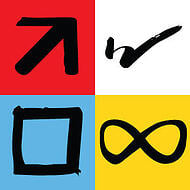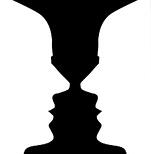 The most recent issue of Training and Development Magazine (T+D, July, 2104) noted new research findings that 78% of managers surveyed indicated that personality is the most important attribute in a job candidate. This study is a part of a larger conversation that personality is increasingly more important than hard skills as one moves up in the organizational ranks. In addition to typically sought after characteristics such as conscientiousness and analytic skills, the study found that the most desirable traits were creativity, drive and flexibility. In other words, in today’s business landscape, in order to be successful as we assume leadership roles, we must ensure we take a whole leader approach.
The most recent issue of Training and Development Magazine (T+D, July, 2104) noted new research findings that 78% of managers surveyed indicated that personality is the most important attribute in a job candidate. This study is a part of a larger conversation that personality is increasingly more important than hard skills as one moves up in the organizational ranks. In addition to typically sought after characteristics such as conscientiousness and analytic skills, the study found that the most desirable traits were creativity, drive and flexibility. In other words, in today’s business landscape, in order to be successful as we assume leadership roles, we must ensure we take a whole leader approach.
A whole leader is someone who has developed the ability to be agile in ALL these areas, rather than only be effective in one or two. In my own work with leaders it became clear early on that although technical skills are certainly necessary at the beginning of ones carrier, and that they can do well with only one of these characteristics noted above, this will not take them to the next level of leadership. As leaders, it is no longer ok to only be analytic, as we also need to be creative and have the courage to make tough decisions. It is no longer ok to be only laser focused on one thing, as we must also see the big picture and navigate competing priorities. Whole leaders know how to use their strengths AND know when something else is needed. Recognizing that AND often means a paradox. Whole leaders know how to strike the right balance between leveraging strengths while not becoming a victim of them.
In addition to my work with leaders, I teach talent development practitioners how to develop their clients to be whole leaders by use of an instrument called FEBI. The FEBI is a personality assessment specifically designed for leadership development that measures precisely the personality characteristics the study above noted as what hiring managers are now looking for when evaluating if a candidate will be successful in their work. Since we know from personality theory that we have a tendency to prefer one or two of these characteristics, or energy patterns of personality as FEBI terms them, talent development practitioners can help leaders:
- Be self-aware to understand their own preferences and how it impacts how they interpret and interact with their environment.
- Align their work with what they are natural great at, growing and embracing their strength.
- Become agile in all patterns but developing their whole self so that they can summon a different energy pattern when their strength isn’t appropriate for a particular leadership task.
The way we bring about this self-awareness is through validated psychometrics such as FEBI. The four patterns FEBI measures have been found to be essential for leadership success:
- Driver – laser focused, drives for results, challenges barriers, stretches for goals, loves to win, gets to the point, fast and direct, and independent.
- Organizer - does the right thing, moves step by step, proper, likes order, plans and lists, neat and tidy, stable and reliable.
- Collaborator - engages people, has fun, rolls with the punches, sees both sides, works around obstacles, plays in the give and take, builds teams and networks.
- Visionary - goes with the flow, lets go, thinks in leaps, sees the big picture, seeks harmony, thinks strategically, future-oriented.
Our research has found that although we tend to favor one or two of these patterns, which we call Home Patterns, the most successful leaders are those that can easily access all four and are able to use the right pattern at the right time. These whole leaders are able to thrive with their strengths, while not getting stuck in them. They are able to recognize what the situation demands, what pattern is best aligned with that demand and effectively enter into that pattern to approach the situation with the right energy. Whole leaders know their strengths but have also developed a full tool box so that when their home pattern isn’t best, they can flip into what pattern is.
Want to learn more about how FEBI can be used in your own talent development efforts? Join us on September 7th for the free webinar, Energize Yourself, Energize Your Business with FEBI





 make up their minds and stop this back and forth and stick with a decision? Why can’t they solve this once and for all?” Have you ever asked the same thing?
make up their minds and stop this back and forth and stick with a decision? Why can’t they solve this once and for all?” Have you ever asked the same thing?




